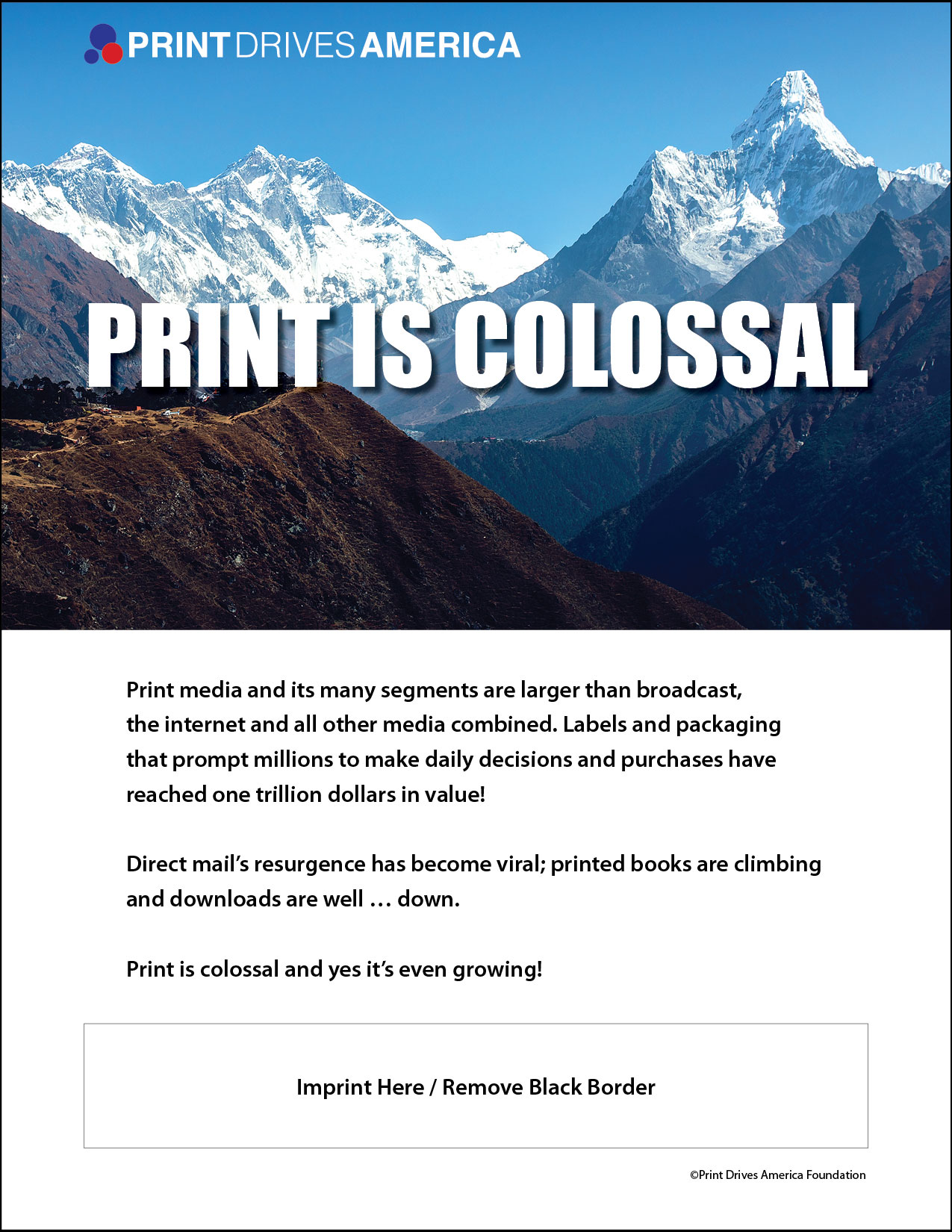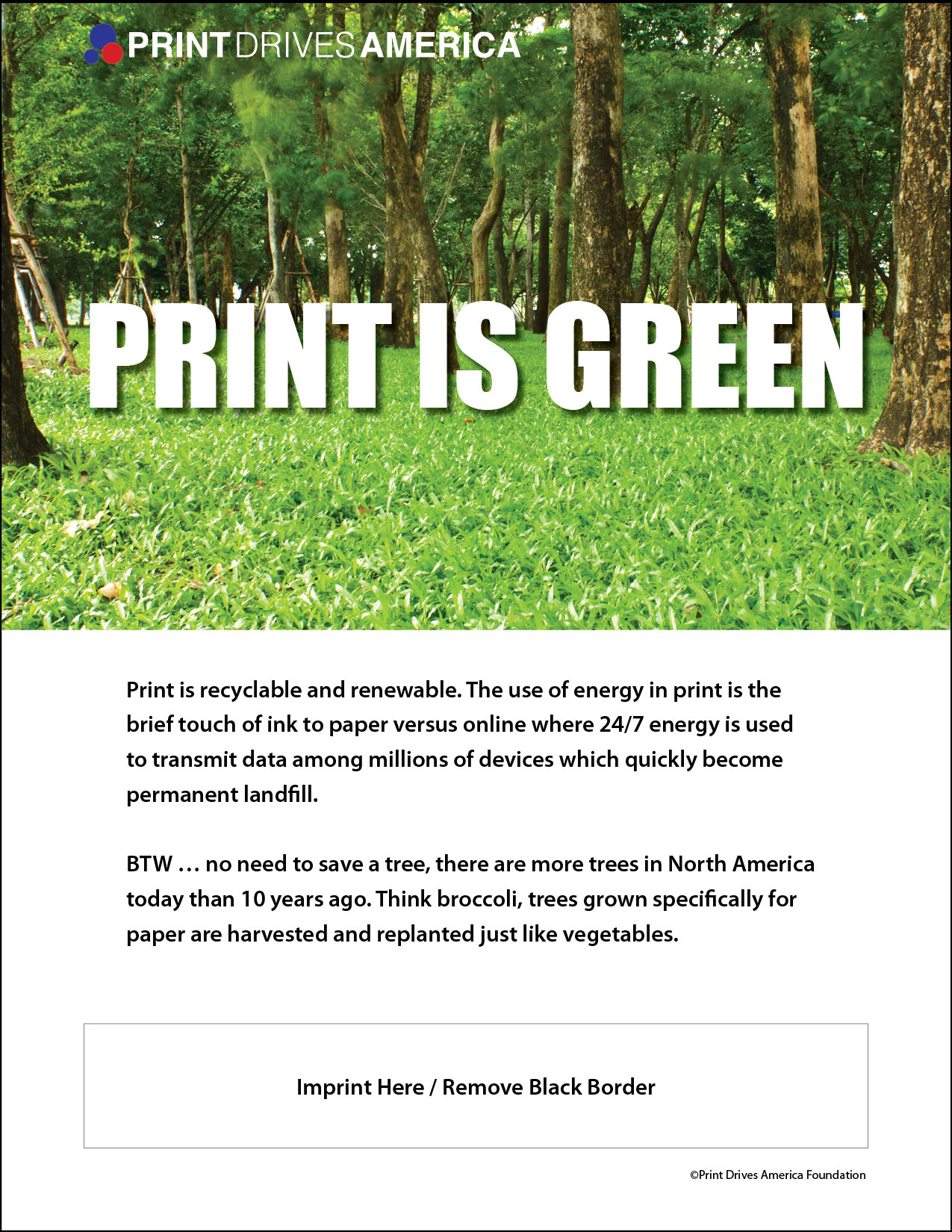By now, most of us have witnessed the give and take since the announcement of the “Toshiba No Print Day” a week or so ago.
If not, here it is in a nutshell. Someone at Toshiba gets the bright idea that they can sell more copiers by encouraging customers and the general business community to make fewer copies. Okay? This is done under the guise of sustainability complete with a goofy guy on a website, dressed as a tree, touting how many trees will be saved by not printing for a day.
Ignoring the obvious fact that the Toshiba marketing message was way off base, the factual assertions made by Toshiba were totally groundless.
Within hours of this announcement, a firestorm of protest was directed at Toshiba from the industry. Spearheaded aggressively and effectively by Printing Industries of America and its President and CEO, Michael Makin, Toshiba No Print Day was ignominiously and unceremoniously cancelled a few days later. Somewhere there is a goofy guy in a tree costume, filing for unemployment.
Where is the lesson here? Despite the obvious one on how to shoot yourself in the foot from a marketing perspective, there are two other things to consider.
First, the immediate and aggressive response by Printing Industries of America reinforces the continued need for an assertive national trade association. Kudos to Michael Makin for squashing “Toshiba No Print Day” before it took on a life of its own.
Second, and equally important, is the necessity involved in the effort to support “Print” as a sustainable and successful communication media. The level of misinformation about our industry reaches every area of our society and it will not improve unless we all take the time to tell the real story, every time you have the opportunity. Trees are a crop. The demand for paper fuels reforestation. Print has a minimal impact on the environment. Print provides good jobs and pays taxes. Print is a time tested and effective method of communication. These are the messages that must be communicated to our kids, their teachers, our friends and relatives, even strangers – every time there is an opportunity. There is plenty of information out there. Here is some to get you started:
Trees and Paper
- Replenished: Wood, which comes from trees, is the primary material used to make paper. Trees are continually replenished—like wheat and corn, unlike plastic—to ensure that our forests are sustainable
- Primarily Made in the USA: About 90% of paper and paperboard consumed in the United States is produced in the United States
Dan Burden, “Forest Profile, Agricultural Marketing Resource Center, 2009 (revised by Malinda Geisler, 2011)
http://www.agmrc.org/commodities__products/forestry/forestry-profile/
- A Small User of Forest Resources: Just 11% of the world’s forests is used for paper (53% for fuel; 28% for lumber; and 8% for other uses)
International Paper, Down to Earth, “Is It Worth Printing?”
http://www.internationalpaper.com/Apps/D2E/Down2EarthOnline/pdfs/D2E_7_WorthPrinting.pdf
- Largely Made from “Waste”: Overall, 33% of papermaking material comes from recycled paper; 33 percent comes from wood chips and scrap from sawmills; and 33% comes from virgin trees.
U.S. EPA, Office of Solid Waste, “Where do the papermaking materials come from?”
http://www.epa.gov/osw/conserve/materials/paper/faqs.htm
- Re-used: Recycled paper is used to make everything from construction products to hospital gowns, lamp shades and egg cartons.
USEPA Office of Solid Waste 2008
http://www.epa.gov/wastes/conserve/materials/paper/faqs.htm#products
Recycling/Landfills
Recycling: 63.5% of the paper consumed in the U.S. was recovered for recycling in 2010.—by volume, more than glass, plastic and aluminum combined.
- Landfill: 16.2% of discards into the landfill are paper and paperboard, of which 41% is paperboard containers and packaging and 59% is all other paper—including such items as tissues, paper plates, and paper in games and novelties. Plastics, by comparison, comprise 17.3% of discards.
U.S. EPA, Office of Resource Conservation and Recovery, Municipal Solid Waste Generation, Recycling, and Disposal in the United States, December 2011
http://www.epa.gov/osw/nonhaz/municipal/pubs/2010_MSW_Tables_and_Figures_50
For more ammunition, checkout the following websites:
There are plenty more, but these will get you started.
We all know business is tough right now and nobody has an overabundance of extra time. Help yourself and help the industry by taking a minute a day to correct the fallacies and misinformation about our industry. We will all benefit from a collective effort to do so!




